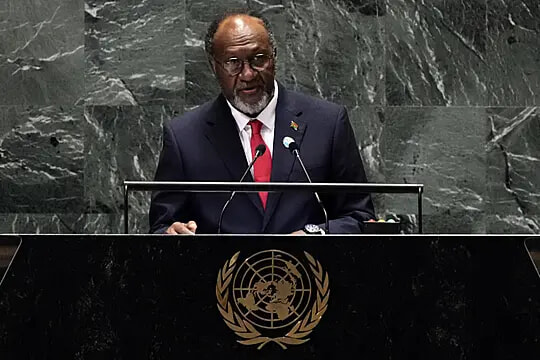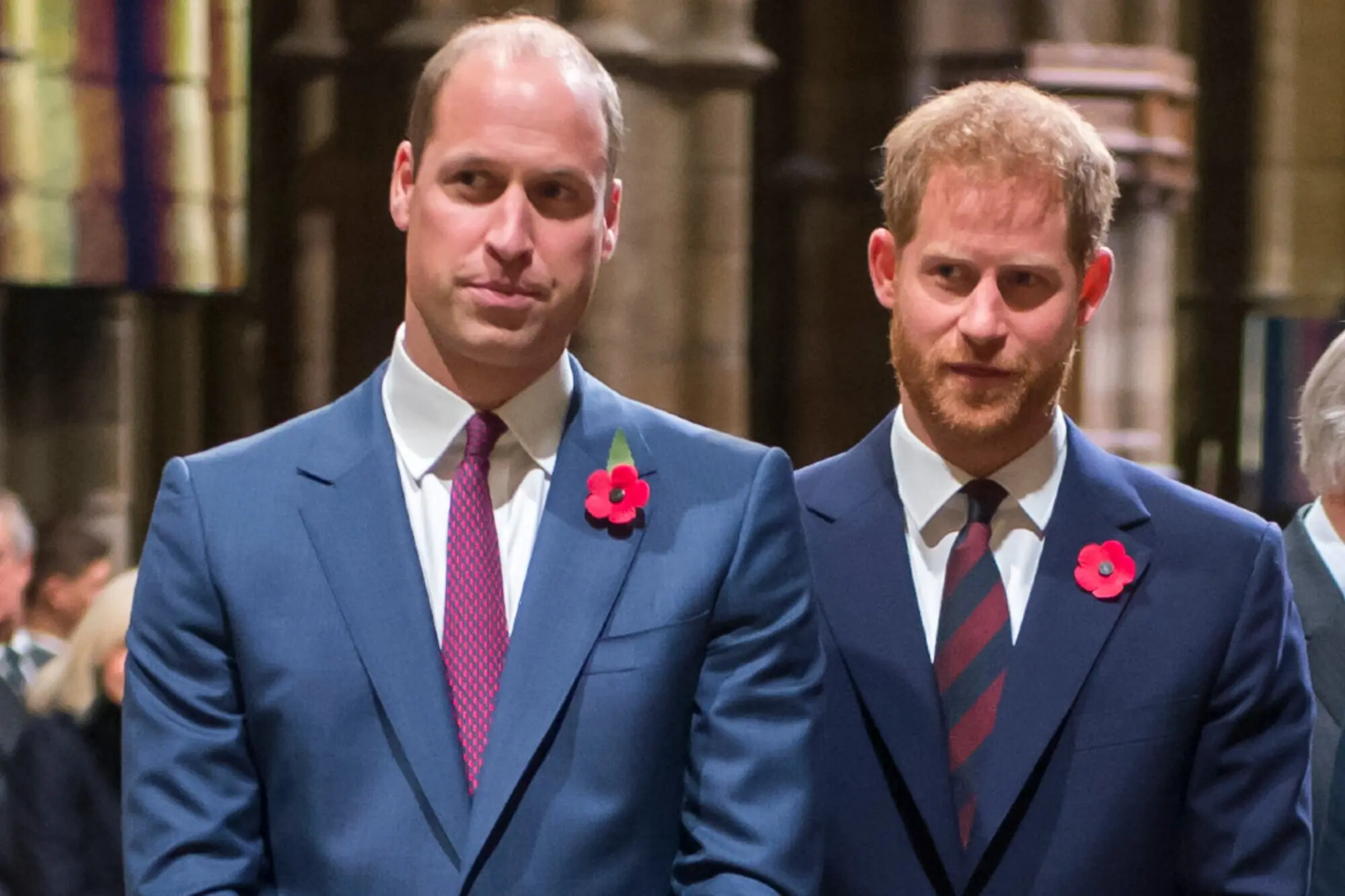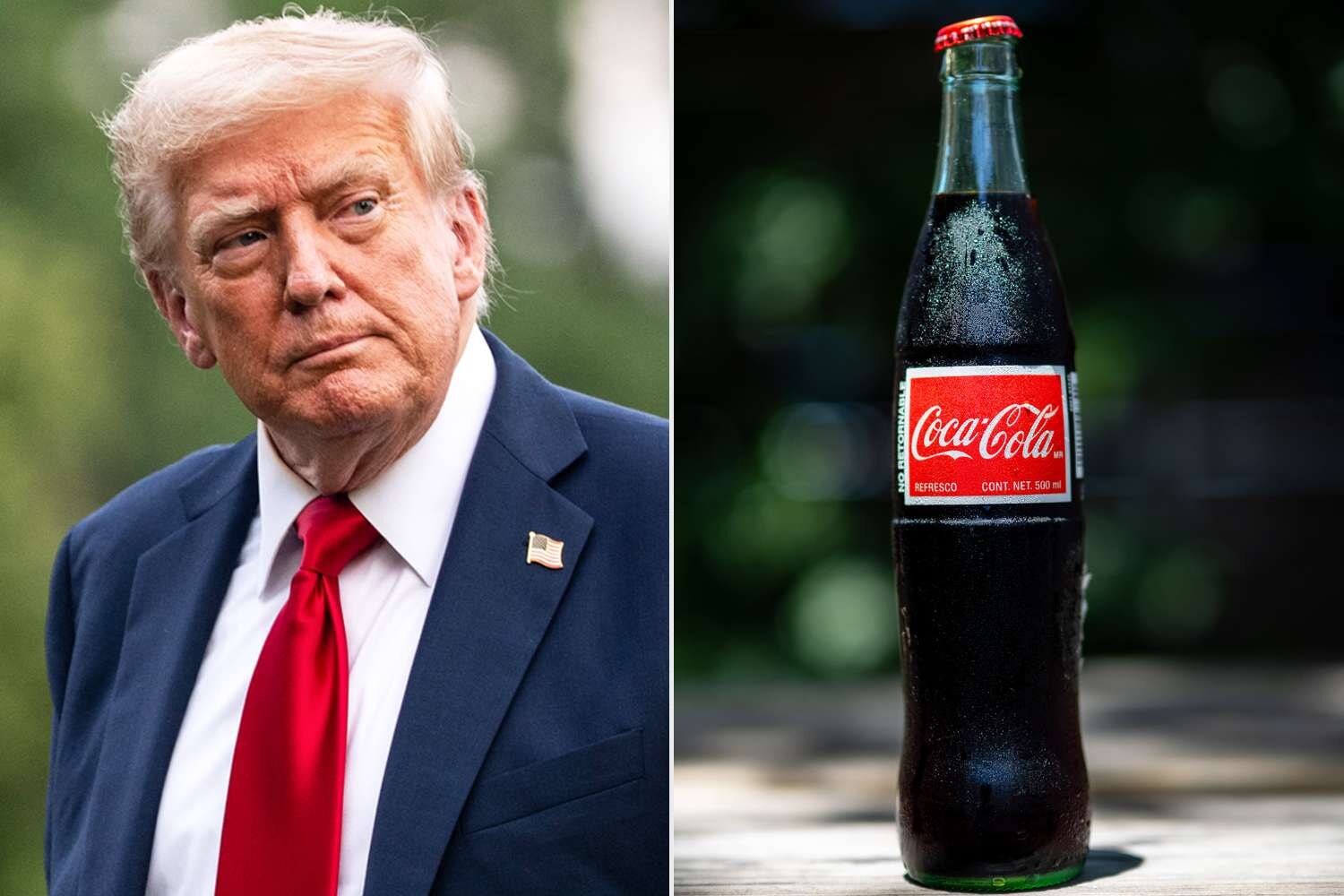
TikTok Might Release a Glitchy US-Only App if a Buyer Isn't Found Soon
This sounds terrible.
Published July 8, 2025
Advertisement
Advertisement
1. The Countdown Begins

The landscape of social media in the United States is bracing for a significant transformation as the future of TikTok hangs in the balance. A years-long saga of political maneuvering, legislative action, and international tension has pushed the wildly popular video-sharing app to the brink of a nationwide ban. Concerns over data privacy, national security, and foreign ownership have steadily built momentum for a U.S. crackdown, culminating in new federal legislation. The Protecting Americans from Foreign Adversary Controlled Applications Act, passed last year, set a clear deadline for TikTok’s Chinese parent company ByteDance to divest its U.S. assets or face removal from American app stores. Despite these looming restrictions, TikTok’s popularity in the U.S. has not waned, and its presence continues to shape digital culture. Throughout 2025, extensions and delays—initiated by President Trump upon taking office—have created uncertainty about the app’s ultimate fate. These pauses have only heightened anticipation, with users, creators, and investors left to wonder what the future holds. As the clock ticks down toward the September deadline, negotiations and rumors about a possible American acquisition have intensified. The story has evolved beyond policy and politics, becoming a touchstone for debates about technology, sovereignty, and global influence. Now, a dramatic pivot is underway that may change not only how Americans use TikTok, but who owns and controls the digital town square. The next chapter in this unfolding story is about to begin, promising high stakes for millions of users and the broader tech landscape.
Advertisement
2. Roots of the Ban

The roots of TikTok’s U.S. crisis can be traced to persistent concerns about national security and data privacy, issues that have plagued Chinese tech firms operating abroad. Since ByteDance launched TikTok internationally, American lawmakers and security officials have questioned the extent of the Chinese government’s potential access to user data. This anxiety crystallized during the Trump administration, with officials citing the risk of foreign surveillance and information manipulation through apps with massive reach. Amid bipartisan calls for action, the U.S. government moved to regulate or ban platforms deemed “foreign adversary controlled,” with TikTok quickly becoming the most prominent target. Public debates raged over the real dangers posed by TikTok, dividing experts and policymakers but generating significant media attention. The resulting legislation gave ByteDance an ultimatum: sell the U.S. version of TikTok to a domestic entity or see the app banned by mid-September 2025. ByteDance and TikTok’s legal team responded with challenges in court, emergency requests for delays, and warnings about the impact on American creators and businesses. While legal maneuvering bought more time, political and popular pressure did not wane, keeping TikTok’s future a daily headline. President Trump’s approach added unpredictability to the process, with successive extensions and the promise of continued talks with China. The intertwined issues of privacy, ownership, and censorship turned TikTok into a symbol of larger geopolitical struggles. For users, the uncertainty has created anxiety and urgency, as many brace for a potentially seismic change in the digital landscape.
Advertisement
3. Negotiations and the Search for a Buyer

As deadlines approached, the race to find a solution accelerated, drawing in American investors, global tech giants, and a flurry of speculation about potential buyers. President Trump confirmed that talks were underway with a group of wealthy U.S. investors aiming to acquire TikTok’s American business, though he declined to disclose their identities. Insiders hinted that Oracle, already involved in TikTok’s U.S. data management, could play a pivotal role in the new ownership structure. ByteDance, meanwhile, faced pressure not just from the U.S. government but also from Chinese regulators, who signaled their approval would be needed for any sale. China’s response to U.S. trade tariffs and technology restrictions added another layer of complexity to the negotiations. Previous attempts to spin off TikTok’s U.S. operations into a separate entity had faltered after Beijing withheld consent. As political drama unfolded, ByteDance accelerated technical preparations for a potential transition, seeking to separate U.S. user data and algorithms from global systems. Reports emerged that a “non-Chinese” consortium could acquire the restructured app, with ByteDance possibly retaining a minority stake. Still, uncertainties remained over whether any deal would satisfy both Washington and Beijing, given the crosscurrents of trade, security, and digital sovereignty. Despite official silence on many details, the stakes of the transaction became increasingly clear as September approached. A successful sale could preserve TikTok’s U.S. presence, while failure would mark the largest forced removal of a global social app from the American market.
Advertisement
4. Building a U.S.-Only TikTok

In response to mounting legislative and commercial pressure, ByteDance began developing a separate, U.S.-exclusive version of TikTok to comply with new American regulations. Dubbed internally as “M2,” this app would exist independently from the international version (“M”) and be operated by a U.S.-based company. Reports indicate that ByteDance has set September 5 as the launch date for M2, at which point the original app will be removed from American app stores. The new TikTok will store all U.S. user data domestically and operate under American cloud services, likely with Oracle as a key partner. Technical teams are racing to untangle source code, algorithms, and backend operations, creating a standalone infrastructure separate from ByteDance’s global network. M2 will comply with both American legal requirements and Apple App Store guidelines, which prohibit regional forks or clones of existing apps. After the launch, the original TikTok app is expected to function for existing U.S. users until March 2026, providing a transition period for migration. American users will likely need to download the new app and transfer their accounts, content, and preferences, though the exact process remains unclear. The move sets a precedent for how transnational apps might navigate diverging regulatory regimes in a fragmented digital world. Although M2’s ownership is expected to be majority American, ByteDance may retain a minority interest, subject to government approval on both sides. If successful, this technical and business maneuver could serve as a template for other platforms caught between national security law and global reach.
Advertisement
5. The Main Event: A New Era for American TikTok

With the September deadline looming, all eyes are on the rollout of TikTok’s U.S.-only version—a development with the potential to redefine the app’s role in American life. The launch of M2 is more than a technical update; it is the result of years of political wrangling, public debate, and behind-the-scenes dealmaking. For millions of users and creators, the transition raises pressing questions about continuity, access, and the future of their digital communities. The migration process, the integrity of user data, and the fate of the global TikTok community are all topics of intense scrutiny. As ByteDance prepares to remove the original app from U.S. app stores, guidance and tools for account transfer and content preservation are anticipated but not yet fully outlined. The impending change has heightened anxiety among influencers, marketers, and everyday users, some of whom worry about lost content or declining engagement. Meanwhile, the political symbolism of a “made-in-America” TikTok is likely to be invoked by both sides of the legislative debate. The debut of the U.S. app will also test the viability of forced divestiture as a regulatory strategy in the age of globalized technology. While some experts believe the app’s content and user experience may remain largely unchanged, the behind-the-scenes ownership and data management will be fundamentally altered. The transition offers a window into the ongoing struggle between open digital platforms and sovereign control. This moment marks the beginning of a new chapter not just for TikTok, but for the future of digital media regulation in the United States.
Advertisement
6. User Impact

The U.S.-only TikTok launch stands to affect millions of users, content creators, and businesses whose livelihoods depend on the app’s reach and engagement. Creators are bracing for potential disruptions in their workflows, worried about whether their followers and content libraries will migrate seamlessly. Brands and advertisers, heavily invested in TikTok’s unique algorithm and user base, must quickly adapt strategies to the realities of the new platform. Questions remain about cross-compatibility between the U.S. and global versions, particularly in how trends, challenges, and content will circulate across borders. There is speculation about the persistence of viral culture and the fate of niche communities that thrive on global interaction. The uncertainty has prompted some creators to explore alternative platforms or diversify their digital presence in case of unforeseen setbacks. For younger users, many of whom have built social identities and connections on TikTok, the change represents both a technical and emotional upheaval. Community managers and moderators face new demands, tasked with maintaining safety, trust, and continuity through the transition period. Industry analysts predict that while TikTok’s appeal may endure, some users will inevitably be lost in the switch, especially if migration is not handled smoothly. The transition’s outcome may serve as a cautionary tale for other platforms navigating complex regulatory and geopolitical challenges. For now, the TikTok community waits anxiously, preparing to adapt as the digital world’s rules are rewritten.
Advertisement
7. Legal Challenges

Developing and deploying a U.S.-only TikTok is a monumental technical feat, demanding not only new infrastructure but also careful compliance with American legal requirements. The codebase, recommendation engine, and data storage architecture must be disentangled from global operations to satisfy national security standards. App store policies add another hurdle, as Apple prohibits regional variations that might confuse or fragment user experiences. American cloud providers, likely led by Oracle, are expected to take on key roles in storing and safeguarding user data. Legal experts point out that the new ownership structure must be vetted by multiple regulatory bodies in both the U.S. and China. There are still open questions about how much ByteDance can remain involved in the new entity, as even minority stakes attract political scrutiny. The timeline is tight: from launch in September to full migration by March, every detail of user transfer, app performance, and compliance will be under the microscope. Any technical failure or security breach could undermine public trust and provide ammunition to political critics of the deal. The case sets a benchmark for how international tech firms might restructure to operate within increasingly nationalized legal frameworks. Industry observers see the TikTok saga as a test of whether technology can remain truly global in an era of growing protectionism and digital borders. Ultimately, the outcome will shape how regulators, companies, and users approach the future of cross-border digital platforms.
Advertisement
8. Global Implications

The restructuring of TikTok for the American market reverberates far beyond U.S. borders, signaling a new era of tech nationalism and digital fragmentation. Other countries, watching the American approach, may pursue their own localization demands, forcing global platforms to create region-specific versions. This raises critical questions about the future of the open internet and the feasibility of seamless global communication. If successful, the TikTok transition could embolden governments to demand similar changes from other tech giants, fragmenting user experiences by geography. Multinational corporations will face new costs and complexities in complying with a patchwork of regional regulations and technical standards. This trend is already visible in other contexts, with India banning multiple Chinese apps and Europe imposing strict data privacy requirements. The TikTok saga thus becomes a bellwether for how technology, commerce, and politics will interact in the years ahead. Cross-border investment, user migration, and intellectual property management will require unprecedented legal and technical sophistication. For international users, the changes could mean more isolation and less access to global trends, networks, and ideas. Digital sovereignty is becoming a driving force in tech policy, challenging the assumption of a borderless digital future. How companies and users respond to these shifts will define the next phase of global digital culture.
Advertisement
9. Political Repercussions

The resolution of the TikTok saga carries significant political consequences for leaders in Washington, Beijing, and beyond. For U.S. lawmakers, the forced restructuring of TikTok is seen as a hard-won victory in the ongoing campaign for digital sovereignty and national security. The outcome will set precedents for future dealings with foreign-owned tech platforms and the scope of executive authority in tech regulation. In China, the move is likely to be perceived as another instance of American protectionism, fueling further tensions in the broader trade and technology war. The global tech industry is watching closely to gauge the viability of cross-border mergers, partnerships, and market access in a volatile geopolitical climate. Civil liberties advocates and digital rights groups warn that forced divestitures may erode internet freedoms, stifle innovation, and fragment the online commons. Future U.S. administrations will inherit the consequences of these decisions, tasked with balancing openness, security, and competitiveness. The shifting landscape may also prompt new legislative battles, as lawmakers revisit the rules governing digital platforms and foreign investment. The political theater surrounding TikTok reveals how technology has become a proxy battleground for larger ideological and economic rivalries. As the dust settles, the policy lessons drawn from the TikTok episode will shape how democracies and autocracies alike govern the digital future. For now, the story remains unfinished, with outcomes and implications yet to be fully realized.
Advertisement
10. The New Digital Frontier

As TikTok prepares to flip the switch on its U.S.-only app, the world stands at the threshold of a new era in digital media and global technology governance. The success or failure of this high-stakes transition will have ripple effects on everything from consumer choice to international diplomacy. For American users, the months ahead promise uncertainty, adaptation, and perhaps the start of a new kind of digital community. For tech companies, the imperative is clear: innovate not only in features and content, but also in navigating the legal and geopolitical labyrinth of the modern internet. Lawmakers, industry leaders, and consumers alike will be watching closely as September 5 approaches and the fate of TikTok becomes a litmus test for future digital policy. No matter the outcome, the decisions made now will inform how other apps, platforms, and online services chart their paths in a world of tightening digital borders. What began as a battle over one app has blossomed into a defining moment for the intersection of technology, politics, and culture. In the end, the TikTok saga may reveal as much about the future of American innovation as it does about the limits of global digital integration. The coming months will test the resilience of online communities, the ingenuity of engineers and executives, and the wisdom of policymakers. As users log in, migrate, or say goodbye, they participate in a historic experiment in the remaking of the digital public square. Whatever unfolds, the age of the truly borderless internet has ended, and a new, more divided era is already taking shape.
Advertisement
Advertisement
You May Also Like






